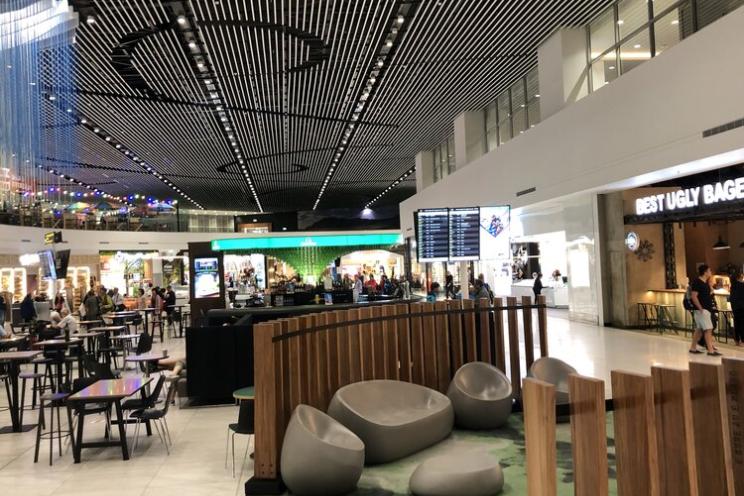
KPIs and metrics every restaurateur should know!
Restaurant management is a complicated task because it involves different criteria and aspects that should come together at the end to create success and hence staying on top of key performance indicators (KPIs) is crucial for this success.
Whether you're overseeing a single restaurant or managing multiple units, understanding and tracking these metrics provides invaluable insights into your operations, helps identify areas for improvement, and drives better decision-making.
What are the KPIs that restaurant operators should know and track?
Sales per Square Foot
Sales per square foot is a measure of how efficiently your restaurant is utilizing its physical space to generate revenue. By dividing total sales by the square footage of your restaurant, you can gauge how effectively you're maximizing your space's revenue potential. This metric is particularly useful for evaluating the performance of different locations, optimizing layout and seating arrangements, and identifying opportunities for expansion or remodeling.
Example: Your restaurant generated $1,000,000 in annual sales with a total square footage of 2,000 square feet. Sales per square foot = $1,000,000 / 2,000 sq. ft. = $500 per square foot.
Average Check Size
Average check size refers to the average amount customers spend per visit to your restaurant. Monitoring this metric allows you to assess the effectiveness of your pricing strategies, menu offerings, and upselling techniques. Increasing the average check size can significantly impact your bottom line without necessarily increasing customer traffic, making it an essential KPI for driving revenue growth.
Example: If a restaurant served 10,000 customers in a month, with a total revenue of $150,000, then the average check size is $150,000 / 10,000 = $15 per customer.
Cost of Goods Sold (COGS)
COGS measures the direct costs associated with producing the goods sold by your restaurant, including food and beverage costs. By tracking COGS as a percentage of sales, you can ensure that your pricing is aligned with your cost structure, identify opportunities to reduce expenses through bulk purchasing or menu optimization and maintain profitability in a competitive market.
Example: Your COGS for the month was $50,000, and total revenue was $100,000. COGS percentage = ($50,000 / $100,000) * 100 = 50%.
Prime Cost
Prime cost is the sum of your total labor costs and COGS. It represents the two most significant expenses for your restaurant and provides a comprehensive view of your operational efficiency.
Monitor your prime cost to identify cost-saving opportunities, optimize staffing levels, and maintain healthy profit margins.
Example: Total labor costs for the month were $30,000, and COGS was $40,000. Prime cost = $30,000 (labor) + $40,000 (COGS) = $70,000.
Labor Cost Percentage
Labor cost percentage measures the portion of your total revenue that goes towards paying wages and benefits for your staff. Keeping labor costs in check is crucial for maintaining profitability while providing excellent service. By tracking labor cost percentages, you can optimize employee scheduling, manage overtime expenses, and ensure that staffing levels are aligned with customer demand.
Example: Your total revenue for the month was $50,000, and labor costs were $15,000. Labor cost percentage = ($15,000 / $50,000) * 100 = 30%.
Employee Turnover Rate
Employee turnover rate reflects the percentage of employees who leave your restaurant within a given period, typically annually. High turnover rates can be costly and disruptive, leading to increased recruitment and training expenses, decreased productivity, and diminished morale among remaining staff. By tracking employee turnover rate, you can identify underlying issues such as poor management, inadequate training, or dissatisfaction with compensation and benefits, and implement strategies to improve retention.
When calculating your employee turnover rate, keep in mind that retaining an employee remains less costly than hiring a new one.
Example: If you had 20 employees leave in a year, and the average number of employees during that year was 50, then the employee turnover rate = (20 / 50) * 100 = 40%.
The National Restaurant Association has found that the pre-pandemic employee turnover rate was 66.5% which is a high number for the food industry that is known for its high employee turnover.
Table Turnover Rate
Table turnover rate measures how quickly tables are cleared and reset between customers. Maximizing table turnover is essential for increasing revenue during peak hours and optimizing seating capacity. By streamlining processes, improving service efficiency, and incentivizing faster dining experiences, you can increase table turnover rate and boost overall profitability.
Example: If your restaurant serves 100 tables during dinner service, and the average dining time per table is 1 hour., table turnover rate = 100 tables / 1 hour = 100 tables per hour.
Cash Flow
Cash flow management is vital for sustaining day-to-day operations, managing expenses, and facilitating growth. By tracking cash flow projections, monitoring accounts receivable and payable, and implementing strategies to improve cash flow, such as reducing inventory, negotiating payment terms with suppliers, and optimizing pricing and promotions, you can ensure the financial health and stability of your restaurant.
Example: Your monthly cash flow statement shows $50,000 in cash inflows and $40,000 in cash outflows, resulting in a net cash flow of $10,000.
Food Waste Percentage
Food waste percentage measures the amount of food that is discarded or spoiled relative to the total food purchased or produced by your restaurant. Reducing food waste not only contributes to environmental sustainability but also improves cost efficiency and profitability. By implementing inventory management systems, portion control measures, and menu engineering techniques, you can minimize food waste and optimize kitchen operations.
Example: You purchased $5,000 worth of food in a month but had $1,000 worth of food waste. Food waste percentage = ($1,000 / $5,000) * 100 = 20%.
Inventory Turnover Ratio
The inventory turnover ratio reflects how quickly inventory is sold and replaced within a specific period, typically a year. A high inventory turnover ratio indicates efficient inventory management, while a low ratio may suggest overstocking or slow-moving inventory. By tracking the inventory turnover ratio and optimizing ordering processes, storage facilities, and menu offerings, you can minimize carrying costs, reduce waste, and improve cash flow.
Example: You sold $120,000 worth of inventory in a year, and the average inventory value during that year was $20,000. Inventory turnover ratio = $120,000 / $20,000 = 6 times.
To stay on top of all your inventory management operations, you should invest in inventory management software that automates all the tasks and eliminates errors for increased efficiency.
Gross Profit Margin
Gross profit margin measures the percentage of revenue that exceeds the cost of goods sold. It is calculated by subtracting COGS from total revenue and dividing the result by total revenue. Gross profit margin provides insights into your restaurant's pricing strategy, cost structure, and overall profitability. By monitoring gross profit margin and identifying opportunities to increase revenue or decrease costs, you can maximize profitability and sustain long-term success.
Example: Your restaurant had a total revenue of $200,000 and COGS of $80,000. Gross profit = $200,000 - $80,000 = $120,000. Gross profit margin = ($120,000 / $200,000) * 100 = 60%.
Return on Investment (ROI)
Return on investment (ROI) measures the profitability of investments made by your restaurant, such as marketing campaigns, equipment purchases, or menu changes. It is calculated by dividing the net profit generated by an investment by the cost of the investment and multiplying the result by 100 to express it as a percentage. Monitoring ROI allows you to evaluate the effectiveness of your investments, prioritize resource allocation, and make data-driven decisions to drive growth and innovation.
Example: You invested $10,000 in a marketing campaign that generated $50,000 in additional revenue. ROI = (($50,000 - $10,000) / $10,000) * 100 = 400%.
Online Ordering and Delivery Metrics
With the increasing popularity of online ordering and delivery services, monitoring metrics such as order volume, delivery times, and customer satisfaction is essential for optimizing this revenue stream. By leveraging technology, partnering with third-party delivery platforms, and providing seamless ordering and delivery experiences, you can attract new customers, increase sales, and differentiate your restaurant in a competitive market.
Example: You received 500 online orders in a month, with an average delivery time of 45 minutes and a customer satisfaction rating of 4.5 stars out of 5.
Social Media Engagement
Social media engagement metrics such as likes, shares, and comments provide insights into brand visibility, customer engagement, and sentiment. By actively engaging with followers, posting relevant content, and leveraging user-generated content, you can build a loyal online community, increase brand awareness, and drive foot traffic to your restaurant.
Yelp or Google Reviews Rating
Online reviews on platforms such as Yelp or Google can significantly influence consumer decisions and shape your restaurant's reputation. Monitoring ratings and responding to feedback promptly, whether positive or negative, demonstrates your commitment to customer satisfaction and can enhance your restaurant's online presence and credibility.
Health Inspection Scores
Maintaining high health inspection scores is essential for regulatory compliance, customer trust, and brand reputation. Regular inspections, rigorous sanitation protocols, and staff training are critical for ensuring food safety and minimizing the risk of foodborne illnesses.
Net Promoter Score (NPS)
Net Promoter Score (NPS) measures the likelihood of customers recommending your restaurant to others. It is calculated based on responses to the question, "On a scale of 0 to 10, how likely are you to recommend our restaurant to a friend or colleague?" Customers who respond with a score of 9 or 10 are considered promoters, while those who score 6 or below are detractors.
Subtracting the percentage of detractors from the percentage of promoters yields the NPS. Tracking NPS allows you to gauge customer loyalty and advocacy, identify brand ambassadors, and implement strategies to improve customer satisfaction and retention.
Example: If your restaurant receives survey responses, with 50% of customers rating a 9 or 10, and 20% rating a 6 or below, NPS = 50% (promoters) - 20% (detractors) = 30.
Understanding and tracking these restaurant KPIs provide valuable insights into your operations, help identify areas for improvement, and drive better decision-making. Whether you're a single-unit operator or managing multiple locations, staying on top of these metrics is essential for achieving long-term success in the competitive restaurant industry.





